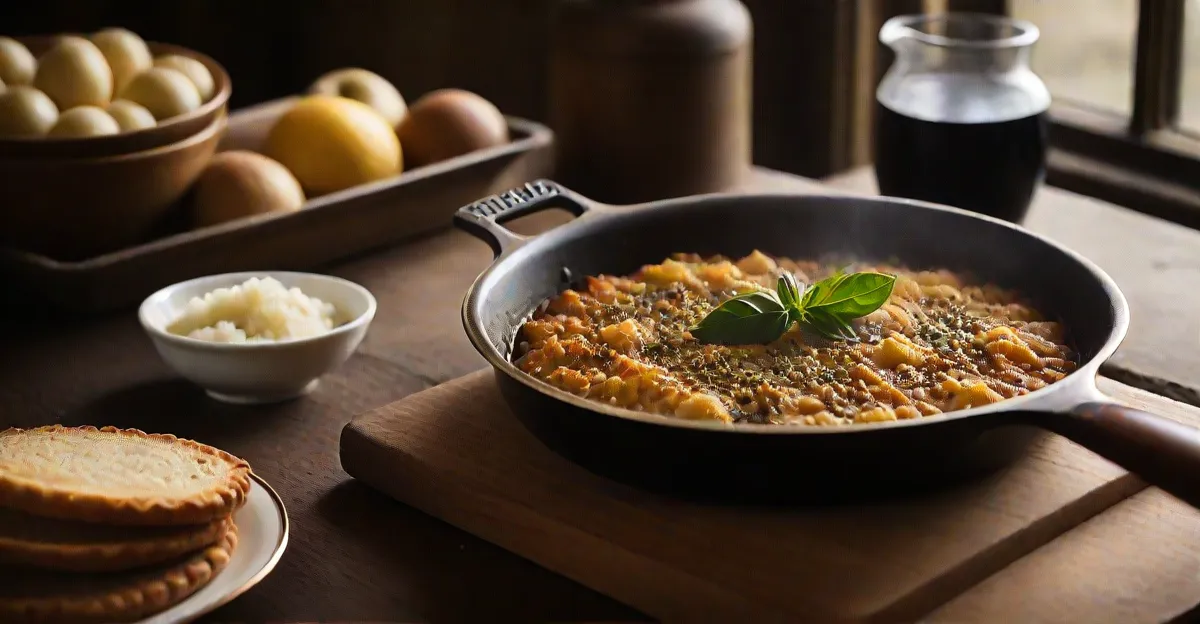Key Historical Periods Shaping British Cuisine
British food history reveals a fascinating tapestry influenced by various cultures and eras, each leaving a mark on historical British cooking. Starting with ancient British cuisine, Roman settlers introduced ingredients such as olives, herbs, and new cooking methods including baking and roasting. Their impact fundamentally shifted local diets by integrating Mediterranean flavors.
The Anglo-Saxon period contributed heavily to staples like grains, vegetables, and hunted meats, focusing on simple preparations that emphasized boiling and stewing. Later, the Norman conquest brought greater sophistication to British food, introducing techniques like refined roasting and elaborate sauces favored by the aristocracy.
This might interest you : How can you make a traditional Eton mess?
Medieval to Victorian periods saw significant changes. Culinary practices evolved alongside social structures; feasts and banquets became displays of wealth and power, with a growing variety of spices imported through expanding trade networks. Dietary habits shifted not only with availability but also through socio-political changes such as urbanization and industrialization, which altered meal patterns and food sourcing.
This historical progression illustrates how British cuisine’s fabric is woven through centuries of change, reflecting both external influences and internal developments. Understanding these key periods enriches appreciation for the British culinary tradition’s depth and diversity.
Have you seen this : What are the essential tips for cooking a classic Welsh rarebit?
Major Cultural and Foreign Contributions
British cuisine’s global journey
Foreign impact on British food is profound, shaping its rich and varied identity. The French culinary techniques introduced during the Norman and later periods revolutionized aristocratic dining styles. French methods such as delicate sauce-making and intricate plating became hallmarks of refined British cooking, elevating historical British cooking traditions beyond basic sustenance.
Later, the British Empire’s expansion brought influences from Indian, Caribbean, and other colonies, integrating exotic spices and flavors into everyday meals. Colonial imports like curry powders, cardamom, and turmeric diversified British cuisine, creating multicultural British dishes that remain popular today. This fusion reflected both taste preferences and the availability of new ingredients.
Furthermore, global ingredients such as potatoes, tomatoes, tea, and coffee drastically altered British food habits. The introduction of potatoes, for example, provided a reliable crop that transformed dietary patterns, underscoring significant shifts in social and economic structures. Tea, imported from Asia, became a national staple, symbolizing social rituals central to British culture.
These cultural and foreign contributions showcase how British cuisine influences span continents, forging a dynamic, globally intertwined culinary heritage with a lasting impact.
Notable Adaptations and Evolution of British Dishes
Delving into the transformation of popular British recipes reveals a fascinating journey. Many traditional British dishes originate from ancient and medieval times but have undergone significant evolution. For instance, early stews and roasted meats in historical British meals gradually incorporated new spices and cooking methods introduced through trade and colonization, shaping the flavorful and diverse cuisine we recognize today.
Cooking methods adapted as well—techniques such as baking, boiling, and roasting expanded with innovations like frying, which gave birth to iconic dishes like fish and chips. The evolution of British recipes often reflects local availability and growing multicultural influences, integrating ingredients that were once foreign but are now staples.
Contemporary interpretations frequently marry tradition and innovation. Classic dishes such as roast dinners are enhanced with exotic spices, while curries have been reinvented blending British and Indian culinary styles. This ongoing adaptation highlights how British cuisine remains dynamic, honoring its heritage yet embracing new flavours. Understanding these changes offers insight into how British food history continues to evolve, reflecting broader cultural and societal shifts over centuries.










